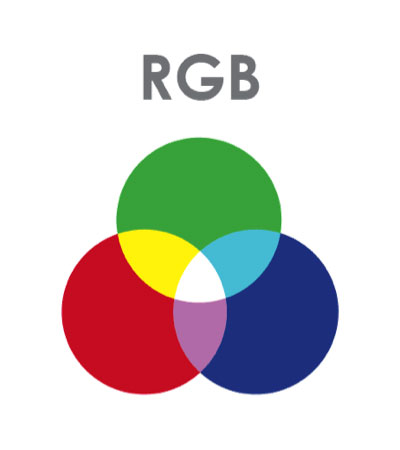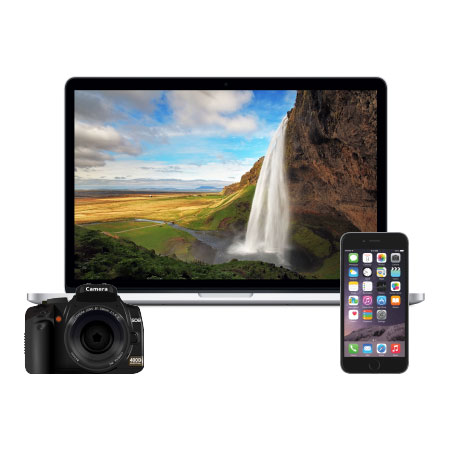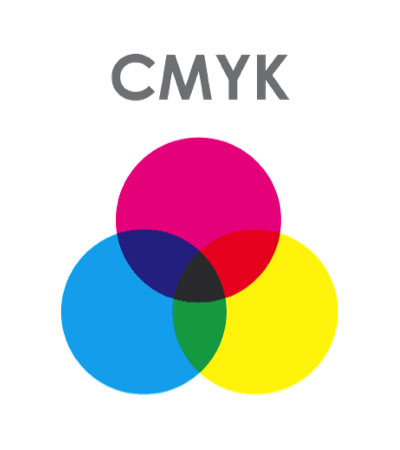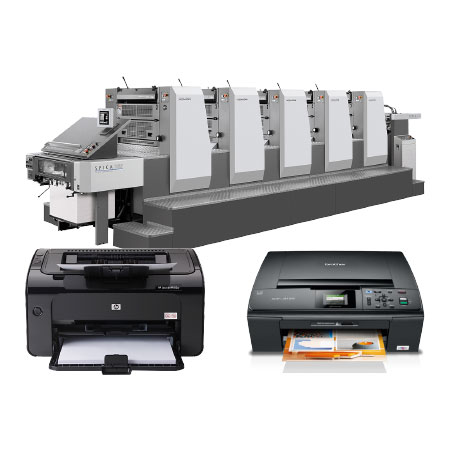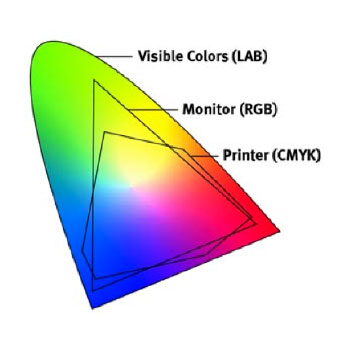Colour gamut refers to the range of colours that can be achieved by different devices, and all devices have different colour gamuts. For example, a standard laser printer typically contains only four inks (cyan, magenta, yellow, and black), which is more limited than some of our high end devices that contain twelve inks.
Visible colours have the largest colour gamut.
RGB devices have the second largest colour gamut.
CMYK devices have a limited colour gamut.
When building files for print, it is important to understand the colours you’ll be using and how they will appear on a printed page. For optimal results, select colours from a CMYK palette or a Pantone swatchbook. If you have to do any colour conversions, it is best to do them on a monitor that has been calibrated to the final output device, which is not always possible when submitting files to a print shop. At TR Trades, our graphics department is trained to look for instances of undesirable colour conversion, and if necessary, we will contact you with solutions.

